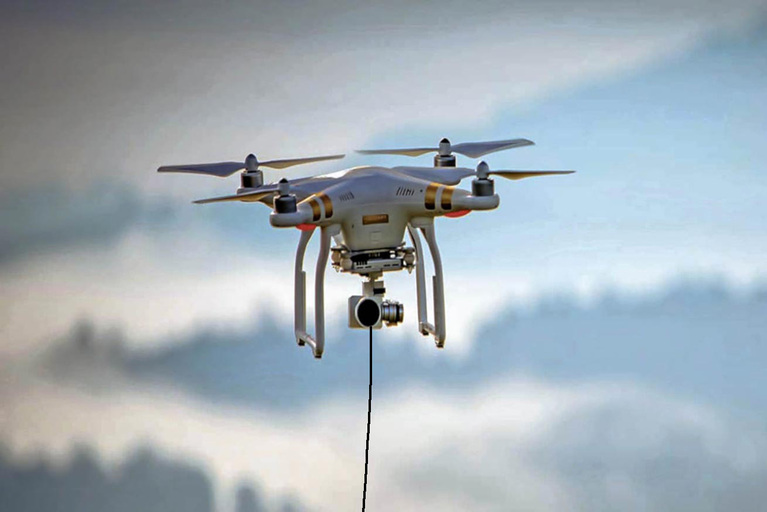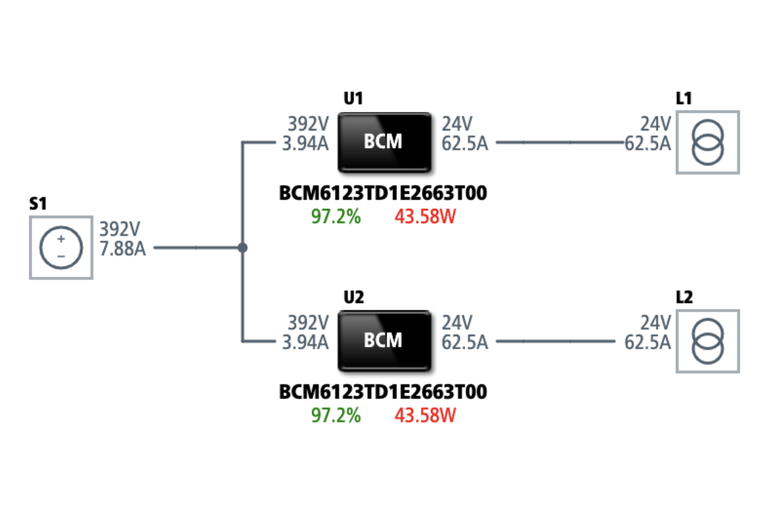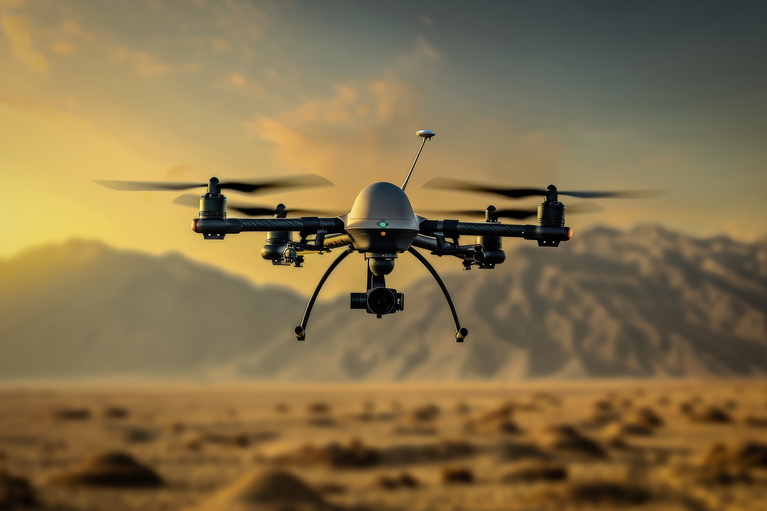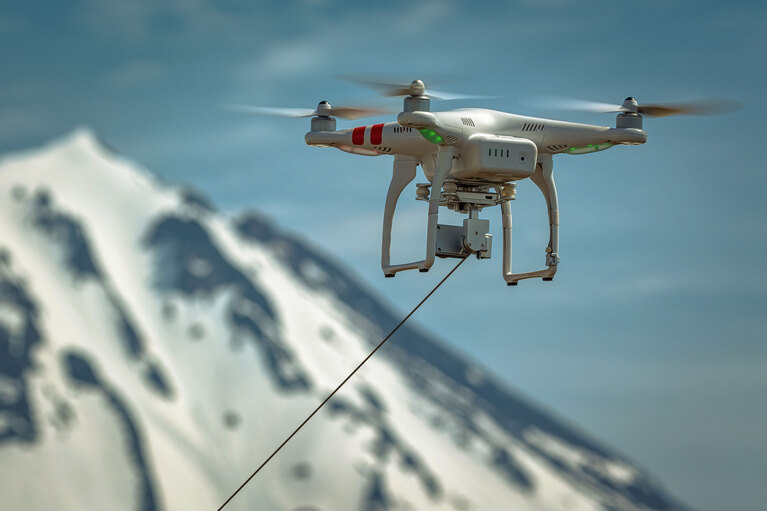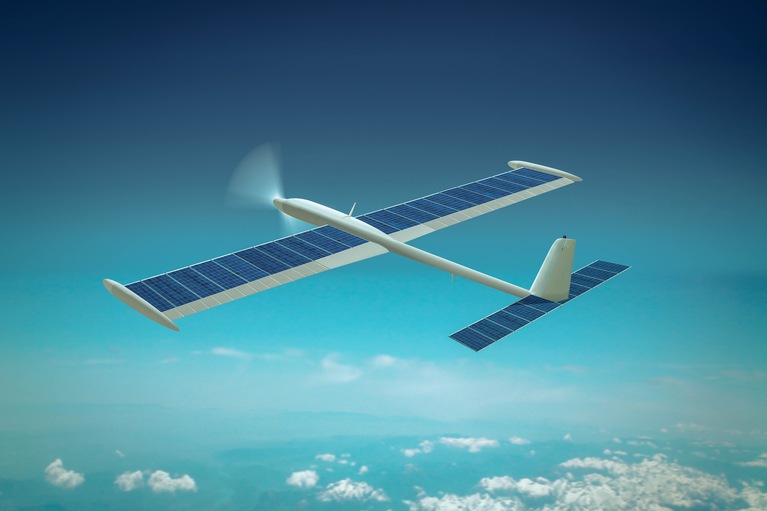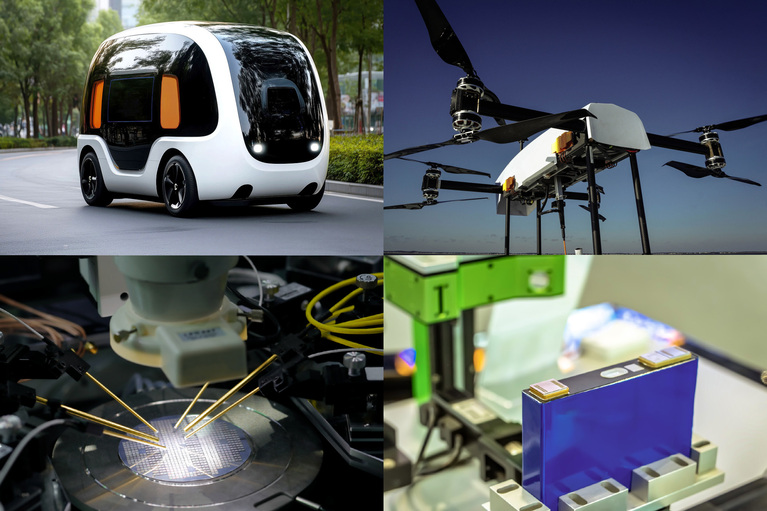
Accelerate your move to a high performance 48V power delivery network
This eBook provides guidance on designing 48V power delivery networks to enhance the performance, efficiency, and reliability of industrial products
Optimizing tethered drone performance requires reducing the tethered cable weight (payload) and increasing to power to the loads.
Robotic and unmanned vehicle (UV) fleets are reshaping the future of automation and production. Continuous improvements in productivity are being driven by extended range and increased uptime that are reliant on fleet maintenance, particularly the charging process. One of the top costs and inefficiencies today is the need for human intervention in the charging process; therefore, UAV and automated robotics developers are looking for ways to make further improvements in power density and efficiency to lighten loads and extend battery life.
Realizing such improvements requires reconsideration of the power delivery network (PDN) and the use of high-density power modules instead of traditional, all-in-one power supplies.
Tethered drones are a growth market for UAVs because of the need for extended uptimes and increased load capabilities for applications such as surveillance and communications. Ispagro addresses this market in an innovative way by retrofitting existing, market leading small drones from manufacturers such as DJI and Parrot. Retrofitting existing UAVs allows Ispagro to rapidly address evolving market needs in a cost-competitive manner.
However, these battery-operated, small drones have limited payloads and uptimes. So adding a tether extends uptime and provides fail-safe operation for safe landing via on-board battery in case of power failure, tether, damage, etc. The tether, however, does add more challenges for the UAV designer who must accommodate the 50m tether cable and aerial units within a tight 400 gm payload limit.
Figure 1: Efficient power delivery with reduced footprint and weight.
The biggest challenge is to reduce the weight of the tether. A heavier tether will require more power to maintain flight times. More weight will also limit the height and range of the drone. High-power DC-to-DC conversion would typically require a bulky power supply because they are sending lower voltage power up the tether.
The best way to alleviate heavy tethers is to send high voltage power up the tether and convert down to the load levels at the other end. High-voltage power can travel more efficiently than low voltage via a thinner gauge cable, which is lighter and more efficient. To minimize weight of the flying drone, small fixed ratio bus converter modules are used to efficiently convert high voltage (400-800V) to loads (20V-50V). The Vicor BCMs can achieve 98% peak efficiency and continuous efficiency of 95%.
High-density and lightweight power modules are ideal for this application, enabling lower input currents and thinner and lighter tether cables. The weight saved from the tether cable can be used to maximize payload to improve the functionality and capabilities of the UAV. Newer versions with high capacity drones also need the power conversion to happen inside drone, and light weight, high-performance power modules are necessary to fit into the system.
Vicor high-density, high-efficiency power modules address Ispagro’s challenges. The BCM family of fixed-ratio converters offer the highest efficiency and highest power density for use in on-board power conversion. BCMs are available in many combinations of input and output voltages to accommodate a wide range of payload applications, and they can be easily paralleled to simplify development of UAV platforms.
The combination of high efficiency and light weight of Vicor BCMs enables tether cable weight reduction of 30% to 40%. BCM modules can be paralleled with inputs powered from different sources because they are isolated transformers. BCM modules mounted close to each other and cooled equally will also equalize power dissipation. This further reduces amount of space needed, simplifies thermal management, and increases the power available to the drone and its payload.
The Vicor PDN solution is compact and lightweight due to industry leading high power density. Ispagro was able to meet their higher power requirements with a simple 2-module solution using fixed-ratio BCMs. This solution achieves 98% peak efficiency and continuous efficiency of 95% with high MTBF. As Ispagro increases power requirements, these BCMs can be swapped out for other BCMs or paralleled as needed with minimal additional development.
Bus Converters are high-density, high-efficiency, fixed ratio (non-regulating) isolated DC-DC converter modules. BCMs are available in ChiP or a Vicor Integrated Adapter (VIA) package which simplifies cooling as well as providing integrated PMBus control, EMI filtering, and transient protection. The family extends from 800V to 48V inputs with various K factors to suit a wide range of applications and markets. Based on our proprietary Sine-Amplitude Converter topology, high voltage BCM ChiPs are able to reach peak efficiencies of 98% and achieve power densities up to 2,400W/in³.
BCM® bus converter modules
This article was originally published by Bisinfotech Magazine.
Accelerate your move to a high performance 48V power delivery network
This eBook provides guidance on designing 48V power delivery networks to enhance the performance, efficiency, and reliability of industrial products
Build better UAVs using modular power
Power Delivery Networks (PDN) based on Vicor high performance power modules enable innovative designs for the next generation of UAV development
High-density, high-power modules enable lighter, safer, lower cost tether cables to extend missions
This class of unmanned vehicle is powered and controlled via a tether from a ground-based power source assisting in extended missions
High-efficiency, high-density modules free up space for advanced communications and extend range
High-efficiency class of UAV depend on solar power to meet its long flight time requirements

